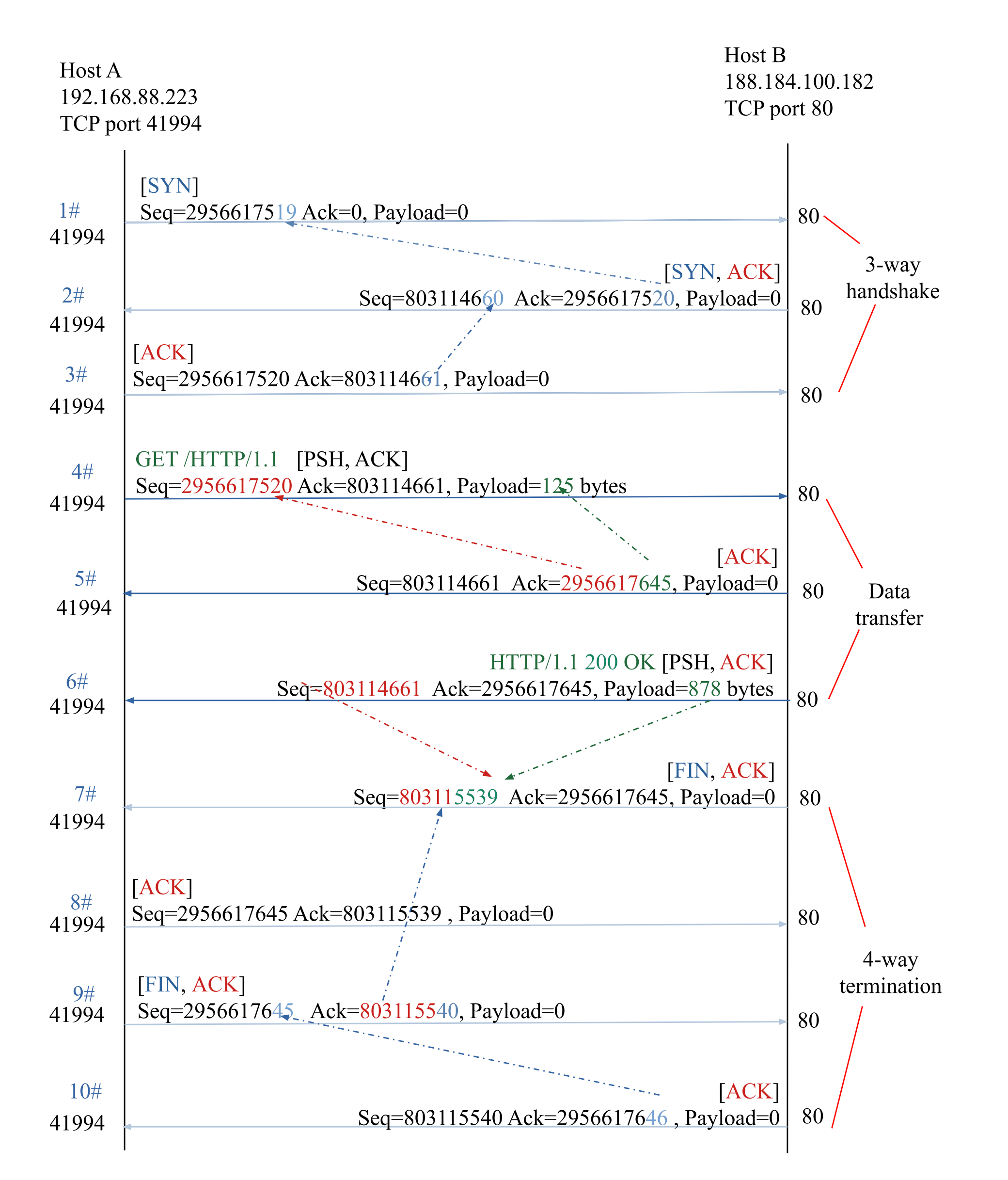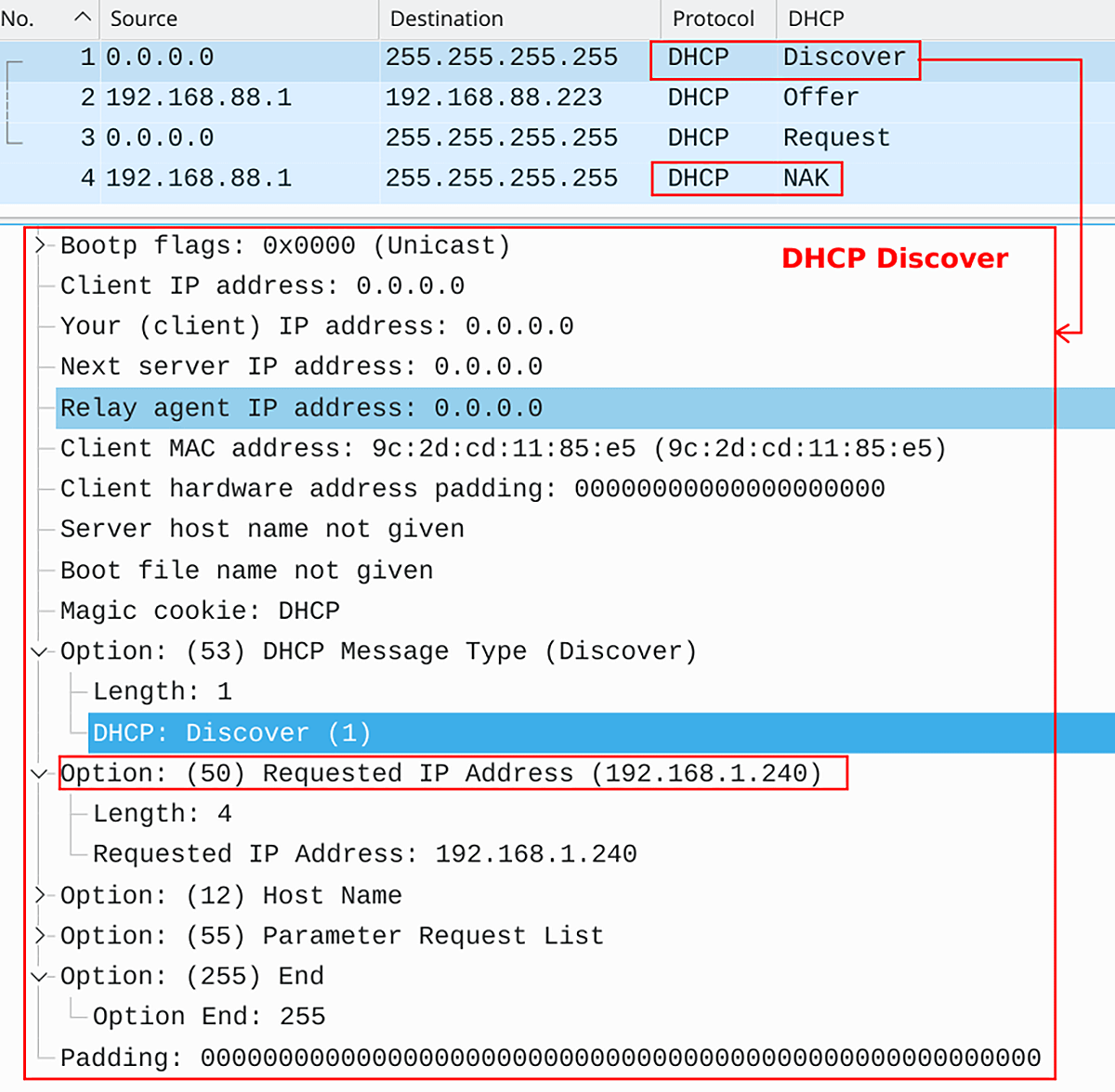 In networking, communication between devices relies on the efficient exchange of data packets. Among the essential elements in this exchange are the ACK (Acknowledgement) and NACK (Negative Acknowledgement) mechanisms. ACKs and NACKs are essential for ensuring that data is transmitted accurately and without errors.
In networking, communication between devices relies on the efficient exchange of data packets. Among the essential elements in this exchange are the ACK (Acknowledgement) and NACK (Negative Acknowledgement) mechanisms. ACKs and NACKs are essential for ensuring that data is transmitted accurately and without errors.
ACK is a positive response indicating that a packet of data was received successfully. The sender can then proceed with sending the next packet.
NACK or NAK is a signal sent by the receiver to indicate a problem with the received data. This could be due to a missing packet, corrupted data, or some other error. Upon receiving a NACK, the sender will typically resend the problematic packet.
1. ACK (Acknowledgement)
It is important to note that not all data protocols rely solely on NACKs. Some, like TCP (Transmission Control Protocol), primarily use ACKs (positive acknowledgments) for successful reception and timeouts or duplicate ACKs to trigger retransmissions.
Packet Analysis: Web Client and Web Server Communication
ACK mechanism comes into play during various stages of network communication, such as connection establishment, data transfer, and termination. Let’s explore a practical scenario involving a web client (Host A) with IP 192.168.88.223 and a web server (Host B) with IP 188.184.100.182 to elucidate the usage of ACK.

In networking, communication between devices relies on the efficient exchange of data packets. Among the essential elements in this exchange are the ACK (Acknowledgement) and NACK (Negative Acknowledgement) mechanisms. ACKs and NACKs are essential for ensuring that data is transmitted accurately and without errors.
ACK is a positive response indicating that a packet of data was received successfully. The sender can then proceed with sending the next packet.
NACK or NAK is a signal sent by the receiver to indicate a problem with the received data. This could be due to a missing packet, corrupted data, or some other error. Upon receiving a NACK, the sender will typically resend the problematic packet.
1. ACK (Acknowledgement)
It is important to note that not all data protocols rely solely on NACKs. Some, like TCP (Transmission Control Protocol), primarily use ACKs (positive acknowledgments) for successful reception and timeouts or duplicate ACKs to trigger retransmissions.
Packet Analysis: Web Client and Web Server Communication
ACK mechanism comes into play during various stages of network communication, such as connection establishment, data transfer, and termination. Let’s explore a practical scenario involving a web client (Host A) with IP 192.168.88.223 and a web server (Host B) with IP 188.184.100.182 to elucidate the usage of ACK.

Figure 1 – Captured Traffic Between Host A and B

Figure 2 – Flow Graph Between Host A and B
TCP 3-way handshake (Packtes 1 – 3)
Host A initiates a TCP connection with Host B using a SYN packet, signaling its intent to synchronize sequence numbers. Host B responds with a SYN-ACK packet, acknowledging the synchronization request. Host A then sends an ACK packet, confirming the establishment of the connection.
1. Packet #1 (SYN) from Host A to Host B
Host A sends a packet with the SYN flag set (indicating connection initiation) and its initial sequence number 29566117519.
This informs Host B that Host A is starting to count all data sent from this initial number until the session ends.
2. Packet #2 (SYN and ACK) from Host B to Host A
Host B receives the SYN packet and sends a SYN-ACK packet. This confirms the receipt of the SYN packet from Host A.
The SYN packet contains the initial sequence number: 803114660.
The acknowledgment number is calculated by adding 1 to Host A’s sequence number 29566117519.
The acknowledgment number is 29566117520 (Host A’s sequence number + 1).
Note: In the SYN packet, payload is zero bytes. However, the acknowledgment number is incremented by 1 even though the SYN packet received from the host B contains no payload data. This is because the presence of the SYN or FIN flag in a received packet triggers an increase of 1 in the sequence.
3. Packet #3 (ACK) from Host A to Host B
Host A receives the SYN-ACK packet and sends an ACK packet.
Host A computes the acknowledgment number based on the payload data received from Host B and Host B’s initial sequence number (803114660).
The acknowledgment number is 803114661 (Host B’s sequence number + 1).
Data Transfer (Packets 4 – 6)
4. Packet #4 (PSH and ACK) from Host A to Host B
This packet contains the HTTP request (the webpage content we are requesting) with its sequence number (2956617520) and an acknowledgment number for the previous data received from Host B (803114661).
Host A sends a packet with the PSH (Push) and ACK bits set. TCP PSH packet contains data that needs to be pushed to the application layer immediately, rather than buffering it.
This packet contains a payload of 125 bytes representing an HTTP request. It contains information about the method (GET), URI (/), host (infor.cern.ch), User-agent (wget) etc.
5. Packet #5 (ACK) from Host B to Host A
Host B acknowledges receipt of the HTTP request from Host A.
The sequence number is 803114661 (Host B’s initial sequence number + 1), and the acknowledgment number is 2956617645 (Host A’s sequence number + received 125 bytes of payload).
6. Packet #6 (PSH and ACK) from Host B to Host A
This packet contains the web page content (payload of 878 bytes) sent by the web server.
Connection Termination (Packets 7-10)
7. Packet #7 (FIN and ACK)from Host B to Host A
Host B sets the FIN (Finish) and ACK bits in the TCP header to inform Host A that it wants to close the connection.
The sequence number is 803115539 (Host B’s sequence number + 878 bytes).
8. Packet #8 (ACK) from Host A to Host B
Host A acknowledges the receipt of the payload (878 bytes) from Host B.
The sequence number is 2956617645 (Host A’s sequence number from the fourth packet), and the acknowledgment number is 803115539 (Host B’s sequence number + 878 bytes).
9. Packet #9 (FIN and ACK) from Host A to Host B
Host A terminates the connection by sending a packet with the FIN and ACK bits set.
The acknowledgment number is 803115540 (Host B’s sequence number from the seventh packet + 1).
10. Packet #10 (ACK) from Host B to Host A
This packet acknowledges the FIN received from Host A.
The acknowledgment number is increased by 1.
Previously, we discussed packet acknowledgment assuming no TCP segment loss. Now, let’s explore how TCP handles situations where segments are lost during transmission.
TCP relies on acknowledgments (ACKs) to ensure reliable data delivery. When a segment is lost due to network congestion, packet drops, or other issues, the receiver cannot acknowledge that specific segment. The sender keeps track of sent segments and their ACKs. If an acknowledgment for a particular segment is not received within a set timeout period, the sender assumes the segment was lost.
In response to a suspected lost segment, the sender retransmits it. Once the receiver receives the retransmitted segment, it sends an acknowledgment.
TCP acknowledgments are cumulative. This means the receiver acknowledges all segments received up to a certain sequence number. For instance, if segments 1 to 4 arrive successfully but segment 5 is lost, the receiver’s acknowledgment would indicate successful receipt up to segment 4. After segment 5 is retransmitted and received, the acknowledgment would then progress to segment 5.
2. NACK (Negative Acknowledgement)
While ACK confirms the successful reception of data, NACK serves a contrasting purpose. When a receiving host encounters errors or fails to receive expected data, it sends a NAK signal to notify the sender of the discrepancy. This mechanism allows for the retransmission of missing or corrupted data, ensuring the reliability of the communication process.
NACK is used in various protocols for reliable data transmission. Here’s why it’s important:
Faster Error Detection: Compared to relying solely on timeouts, NACKs allow the receiver to directly notify the sender about a problem with a specific packet. This speeds up the error recovery process.
Targeted Retransmission: With NACKs, the sender knows exactly which packet needs resending. This avoids unnecessary retransmissions of packets that were received correctly, saving bandwidth and improving efficiency.
Detailed Error Information (In some protocols): Some protocols allow NACKs to carry information about the type of error detected (e.g., checksum mismatch). This helps diagnose and address underlying transmission issues.
Here are some specific protocols that utilize NAKs:
High-Level Data Link Control (HDLC): A widely used protocol for error-free data transmission on point-to-point connections. It employs NAKs for error notification and retransmission requests.
Stop-and-Wait ARQ (Automatic Repeat Request): A simple reliable data transfer protocol where the sender waits for an ACK before sending the next packet. If a timeout occurs or a NACK is received, the sender retransmits the problematic packet.
Go-Back-N ARQ: An extension of Stop-and-Wait that allows the sender to transmit multiple packets before waiting for an ACK. However, upon receiving a NACK, the sender needs to retransmit not only the problematic packet but also all subsequent packets that haven’t been acknowledged yet.
2.1 DHCP NAK Message (DHCP NAK)
NAK mechanism is also used by an upper-layer protocols, such as DHCP. A DHCP NAK message is sent by a DHCP server to reject the DHCP Request message from a DHCP client. For example, if a DHCP server cannot find matching lease records after receiving a DHCP Request message, it sends a DHCP NAK message indicating that no IP address is available for the DHCP client.
This process is illustrated in Figure 3. The DHCP client attempts to acquire an IP address by sending a DHCP Discover message specifying its preferred address (192.168.1.240) in option 50. It repeats this request with a DHCP Request message including the same preferred address.
The DHCP server operates within a specific IP address allocation range (192.168.88.0/24). Since the requested IP (192.168.1.240) falls outside this range, the server rejects it by sending a DHCP NAK (Negative Acknowledgement) message.

Figure 3 – DHCP Server 192.168.88.1 Sending DHCP NAK in Packet #4
Note: Upon receiving the DHCP NAK, the client understands that its preferred IP address is unavailable. To initiate the address allocation process again, the client might resend a DHCP Discover message with the requested address set to 0.0.0.0 (indicating no specific preference).
Conclusion
ACK and NAK are critical components of reliable data transmission in networking. ACK confirms the successful receipt of data, while NAK indicates data transmission failure. By analyzing the sequence and acknowledgment numbers in TCP communication, we can track the progress of data transmission and ensure its reliability.
While ACK is widely used in TCP/IP networks, NAK-based protocols are more specialized and employed in specific network environments. Understanding ACK and NAK is essential for network administrators and engineers to troubleshoot and optimize data transmission processes, ultimately ensuring efficient and reliable network communication.










